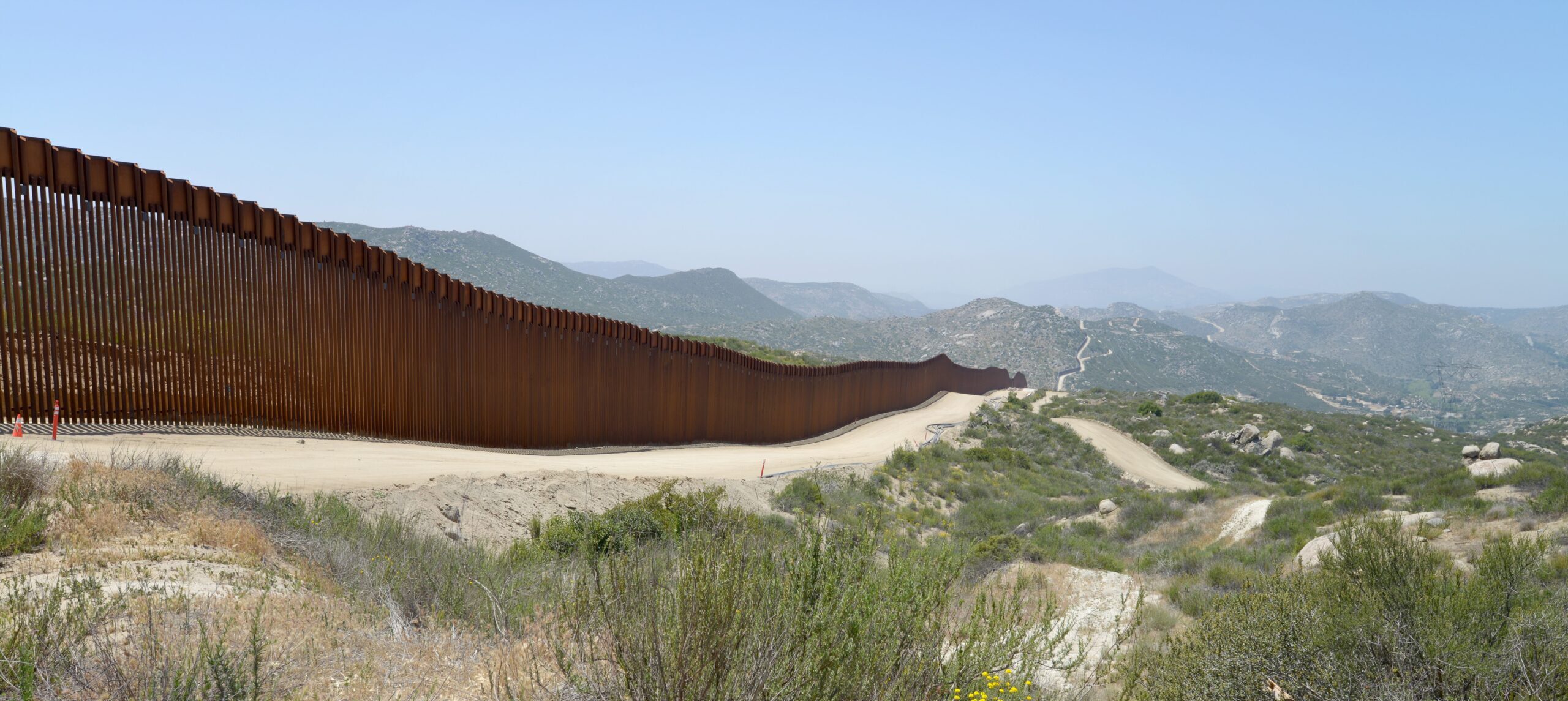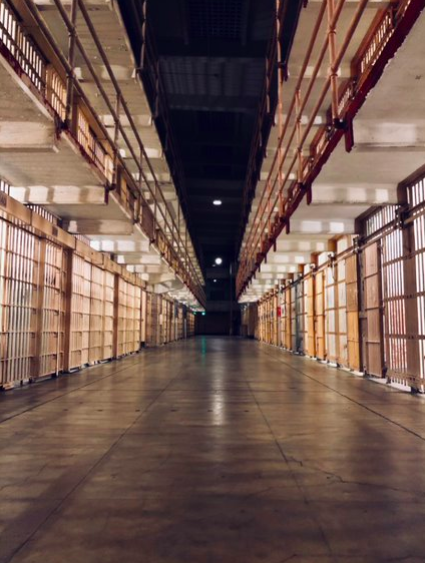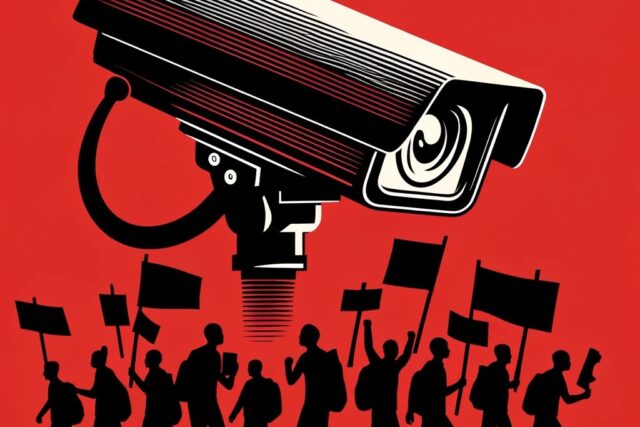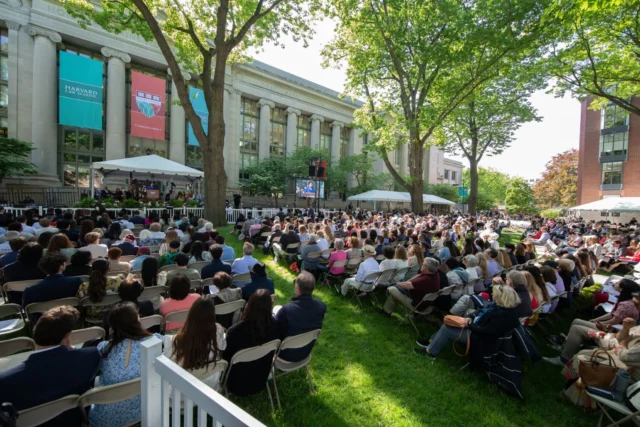The Profitability of Inhumanity
How Corporate Power Breeds Forced Labor in Privatized Immigration Detention
Austin Nielsen-Reagan
February 9, 2022
Imagine the following scenario:
You have lived in the United States for decades, since you were a small child, but you are not a U.S. citizen. One day, although you have done nothing wrong, armed immigration officers show up to your home and lawfully abduct you. The federal government—the same one whose flag you pledged allegiance to in school every morning growing up—initiates deportation proceedings against you and now will incarcerate you for the duration of your case. You will spend years in what is officially labeled “civil detention” but is, in reality, indistinguishable from prison.
In detention, the guards order you to clean the living quarters for no pay. They then put you to work operating the rest of the prison at a wage of one dollar per day, less than 2% of the federal minimum wage. At first you try to refuse, but then the guards “coincidentally” move you to solitary confinement. You soon realize that refusal is not a genuine option. Besides, you desperately need money to pay for basic essentials like toothpaste and soap while you are incarcerated. You put your head down and do the work. Meanwhile, thanks to your labor and that of others like you, prison corporations are profiting hundreds of millions of taxpayer dollars every year, as their executives and shareholders gleefully watch their stock prices rise.
This scenario is neither fictional nor uncommon. “The truth is that, if they had to pay for all of the labor that they use in order to make a profit, they would not be in this business,” explains R. Andrew Free, a civil rights attorney who has represented many people detained by ICE (Immigration and Customs Enforcement). Mr. Free sees this exploitation as inherent to private prisons’ business model. In their pursuit of profits, prison companies like GEO Group and CoreCivic systematically exploit the people they cage for free or near-free labor, boosting their stock prices through legalized labor trafficking.
“The truth is that, if they had to pay for all of the labor that they use in order to make a profit, they would not be in this business,” – R. Andrew Free
The modern-day prison corporation was invented in 1983, when T. Don Hutto and Tom Beasley strung barbed wire around a motel in Houston, Texas, to incarcerate immigrants for the U.S. government amid rising migration from Latin American and Caribbean nations. That Houston operation marked the origin of Corrections Corporation of America (CCA), now known as CoreCivic. One year later came the founding of Wackenhut Corrections Corporation, now known as GEO Group, Inc., the world’s largest prison company. (This history is outlined in a 2020 report by Worth Rises.)
In the Reagan Era, with the national emphasis on privatization and deregulation, private prisons gained political traction as a supposedly more cost-effective and economy-boosting alternative to traditional government-run facilities. They have since become dominant in immigration detention. As recently as 2009, the majority of all immigration detention beds were in government-run facilities, but by 2020, private prisons were incarcerating 81% of all ICE detainees.
As its privatization has skyrocketed, so has the number of people in U.S. immigration detention. Since 1995, the average number of human beings in ICE custody on any given day has soared from around 7,500 to over 50,000 people. Because some noncitizens are held only for brief periods of time, the annual numbers are far greater, surpassing 500,000 detained people in 2019. These figures don’t even include the tens of thousands of people detained daily in Customs and Border Protection (CBP) facilities.
The explosion in immigration detention rates resulted from a series of devastating policy decisions by the federal government over the course of the 1980s and 1990s. In 1988, for example, President Reagan’s Anti-Drug Abuse Act invented the immigration law concept of the aggravated felony, a category of crimes that are not necessarily aggravated nor felonies under state law, but which trigger severe immigration consequences—including mandatory detention, another invention of the Act. Then, in 1996, President Clinton’s Antiterrorism and Effective Death Penalty Act (AEDPA) and Illegal Immigration Reform and Immigrant Responsibility Act (IIRAIRA) expanded both the definition of aggravated felony and the range of conditions triggering mandatory detention. Meanwhile, other legislative acts like the 1994 Biden/Clinton Crime Bill allocated more and more resources to incarceration and policing, indirectly increasing the detained population.
Assisted by these policy decisions and lucrative federal contracts, the private prison industry managed to withstand growing public criticism and go on to thrive. As told by Lauren-Brooke Eisen, author of Inside Private Prisons: An American Dilemma in the Age of Mass Incarceration, after new federal Bureau of Prisons contracts bailed out “the two largest prison corporations from their financial woes” amidst negative publicity, “GEO Group’s stock prices steadily rose from about $7.00 in May 2000 to over $14.00 just one year later. [CoreCivic]’s growth was even more dramatic . . . [and] leapt from about 75 cents to over $14.00 in just two weeks.”

More recently, high detention levels have been further solidified by the advent of “bed quotas,” as detailed in a 2015 report by Grassroots Leadership. In 2004, the Intelligence Reform and Terrorism Prevention Act began mandating drastic annual increases in the total number of immigration detention beds. A few years later, the DHS Appropriations Act of 2010 instituted a flat quota of no less than 33,400 beds. The quota was added to the legislation by Senator Robert Byrd (D-WV), a former Exalted Cyclops of the Ku Klux Klan. According to Mr. Free, “the financial incentives that drive the usage of bed space really aren’t based on policy considerations but rather based on lobbying and a corporate service to a larger economic goal that is in keeping with the political goals of exclusion, and criminalization, and otherization for political gain.” Unsurprisingly, the historic expansion and privatization of the immigrant-caging machine have brought enormous financial gains for the prison corporations involved.
Between 2000 and 2020, the combined revenue of just GEO Group and CoreCivic rose from well under half a billion dollars to around $4.5 billion. Between a quarter and a third of that revenue comes from ICE detention contracts. As of 2016, the companies’ profit margin was around 9%, meaning that prison corporations are pocketing hundreds of millions of taxpayer dollars every year; Eisen’s research found that GEO Group and CoreCivic raked in “382 million in profits in 2016 alone.” Behind these profit figures lies one little trick at the heart of private prisons’ business model: labor exploitation.
Unsurprisingly, the historic expansion and privatization of the immigrant-caging machine have brought enormous financial gains for the prison corporations involved.
The incarceration business requires a lot of labor, and non-exploitative labor costs money. In fact, labor is the single largest cost for private prisons, accounting for around 60-70% of their operating budgets, according to a 2018 report by the Sentencing Project. If the companies had to pay even minimum wage for all the work required to run their facilities, the services they offered the government would be too expensive. This would jeopardize the narrative that private prisons save the government money, their sole rationale for existence. As summarized by Mr. Free, “the biggest cost that you have if you operate a detention center, whether you’re the federal government or a private company, is labor. If you can, you shift that cost onto the people who are locked up.”
In the criminal context, it was easy for prisons to extract forced labor from the people in their custody, as the Thirteenth Amendment allows involuntary servitude “as a punishment for crime.” Often credited with abolishing slavery, in truth, the Amendment just redefined the category of humans it was legal to enslave. After emancipation, prisons allowed enslavement to continue, first as convict leasing, then as chain gangs, and today in still other forms. Mr. Free calls this “the reality of the legalized enslavement of 2.1 million people in this country that we are not ready to face yet.”
In the immigration context, on the other hand, detention centers have faced a challenge: violations of immigration law are civil infractions, not crimes, so immigration detention is not supposed to be punishment in the way prison is. In her 2015 article “Slavery by Another Name: ‘Voluntary’ Immigrant Detainee Labor and the Thirteenth Amendment,” Professor Anita Sinha observed: “Since [the 19th-century] era in American immigration law history, deportation, and by extension detention, has been consistently characterized as a civil, regulatory matter.” As a result, to comply with the Thirteenth Amendment, any labor performed by immigration detainees has to be “voluntary.” To get around this obstacle to profits, ICE contractors have found ways to achieve a legal fiction of voluntariness.
Fortunately for prison corporations, people in immigration detention are not protected by labor laws like the Fair Labor Standards Act. Courts have reasoned that immigration detainees are not technically “employees” as the Fair Labor Standards Act defines that term. For instance, in Menocal v. GEO Group, a case litigated in part by Mr. Free, a federal judge in Colorado held that immigration detainees “are not ‘employees’ under the Fair Labor Standards Act” or the Colorado Minimum Wage Order “because immigration detainees, like prisoners, do not use their wages to provide for themselves.”
Exempt from such laws, private prisons can pay detained individuals as little money as they want without facing consequences. At the same time, paying a nominal wage enables prison companies to claim that the labor they extract is voluntary.
Exempt from such laws, private prisons can pay detained individuals as little money as they want without facing consequences.
Much of the labor exploitation perpetrated in ICE detention facilities takes place under the ironically named Voluntary Work Program (VWP). The VWP’s origins can be traced back to 1950, when Congress enacted a law appropriating funds to the Immigration and Nationality Service (replaced in 2003 by the Department of Homeland Security) for “payment of allowances (at such rate as may be specified from time to time in the appropriation Act involved) to aliens, while held in custody under the immigration laws, for work performed.”
In the following years, Congress set a payment rate of “not in excess of $1 per day.” It renewed that rate for the last time in 1978 and has not adjusted it since. Although the longstanding lack of congressional renewal draws into question the legality of the VWP, the $1/day pay rate is very much still in effect at detention centers throughout the country. Indeed, ICE’s current official standards and detainee handbook explicitly state that detainees can be paid as little as one dollar for each full day of work.
By paying the nominal wages allowed under the VWP—wages less than 2% of the federal minimum wage—prison companies have been able to run off of forced labor for decades. According to Mr. Free, “the private prison business model, essentially, is an enslaver’s model.” And like the enslavement of Black people before Emancipation, private prisons’ model has deep roots in American capitalism and corporate law.
The central pillar of corporate law is shareholder primacy: the idea that corporations must pursue financial profits for shareholders above all, no matter the consequences for anyone outside that privileged group. In the words of economist Milton Friedman, “there is one and only one social responsibility of business—to use its resources and engage in activities designed to increase its profits so long as it stays within the rules of the game.” On that basis, the corporate incentives to exploit detainees for labor are simple: the more these facilities can rely on forced labor, the lower their operating costs, and therefore the higher their profits. If corporate prison managers decided to extract slightly less labor from the people they cage, or to pay them a few cents more, that would effectively take money out of shareholders’ pockets, and the managers could face legal liability for violating their “fiduciary duty.” Besides, who wants to make less money?

Private prisons’ entire purpose is to treat incarceration like a business, minimizing costs while maximizing revenue.
Tom Beasley said that he founded CoreCivic on the principle that you could sell prisons “just like you were selling cars, or real estate, or hamburgers.” A for-profit orientation toward the caging of human beings has always ensured deplorable conditions for the people that private prisons incarcerate. As stated by policy analyst Jesse Franzblau, “for-profit prisons have little incentive to focus on anything other than ensuring profitability for their shareholders, and are lightning rods for human rights atrocities.”
Theorists like Friedman would insist that “market forces,” if left to their own devices, would keep corporations in check without the need for normative regulation. Prison corporations themselves are major proponents of the “market forces” story, as can be seen in statements like this one from CoreCivic: “Market forces play a major role in correctional companies providing the best services and management of prison facilities. Should a contractor not perform, they put themselves in a position to lose business.” So far, however, the market seems quite fine with prison corporations’ daily human rights violations. A 2016 study found no indication of prison corporations’ stock prices falling in response to negative media reports about the companies.
To ensure that the state of affairs remains in their favor, prison corporations have effectively co-opted, or captured, the politicians and government agencies charged with regulating their industry. In Mr. Free’s eyes, “the current regulatory capture is near 100%.” Before founding CoreCivic, Beasley and Hutto themselves had been chairman of the Republican Party of Tennessee and director of the Arkansas Department of Corrections, respectively. They have since brought onboard at least two former directors of the federal Bureau of Prisons, J. Michael Quinlan in 1993 and Harley G. Lappin in 2011. (During their BOP tenures, the directors had contracted with CoreCivic for hundreds of millions, if not billions, of dollars.) By hiring so many former regulators of their industry, prison corporations remain highly connected to the government offices tasked with regulating them.
Prison companies have long claimed not to take positions on policy issues. For instance, GEO Group has made official statements that it “has never taken a position on incarceration or immigrant detention policies” and “has never directly or indirectly lobbied to influence immigration policy,” and CoreCivic has made similar statements. At the same time, their money tells a different story. Between 2008 and 2014, GEO Group and CoreCivic spent a combined $16,055,000 on federal lobbying, much of it targeted at the DHS Appropriations Subcommittee, which controls the immigration detention bed quota.
In line with their profit motives, private prisons spend money to push for policies that will increase criminalization, incarceration, and immigration restrictions. In 2010, Arizona enacted a law that created new classes of crimes relating to immigration and immigration status, expanding the population at risk of detention. It is no coincidence that 30 of the bill’s 36 co-sponsors had all received campaign contributions from the private prison industry by the time the bill reached the senate floor. The Arizona governor, Jan Brewer, had also accepted substantial funds from CoreCivic, whose former lobbyists she even hired as her top aides.
In line with their profit motives, private prisons spend money to push for policies that will increase criminalization, incarceration, and immigration restrictions.
Looking to federal rather than state politics, prison corporations contributed millions of dollars to Trump’s campaign and associated super PACs to get him into office, according to a 2018 report by The Sentencing Project. In 2017, after the Department of Justice under Jeff Sessions announced that the federal government would continue to contract with private prisons, reversing a 2016 phase-out plan initiated by the Obama administration, CoreCivic’s and GEO Group’s stock prices more than doubled. Later that year, GEO Group elected to hold its annual leadership conference at a Trump golf resort in Miami, funneling more money into the Trump family’s pockets. Buying such political leverage has enabled prison corporations to ensure they will be around for many years to come.
Today, prison corporations continue to wield influence in President Biden’s administration. On the campaign trail, now-President Biden promised to end the federal government’s use of “private facilities for any detention, including detention of undocumented immigrants.” In January 2021, soon after inauguration, Biden issued an executive order directing his administration not to renew contracts with private prisons—for criminal incarceration. The order did not extend to ICE’s contracts with private facilities. On the contrary, now that their other federal contracts are in jeopardy, private prisons are all the more eager to enter the immigration detention market.
Over the years, private and public actors have increasingly stepped away from the private prison industry. For example, as Lauren-Brooke Eisen reported in 2019:
“Amid public outcry, eight banks—JPMorgan Chase, Wells Fargo, Bank of America, SunTrust, BNP Paribas, Fifth Third Bancorp, Barclays, and PNC—have said they would no longer finance the private prison industry. Three states—California, Illinois, and Nevada—passed legislation attempting to curb the operations of private firms that manage prisons and detention centers.”
But as calls for the end of their industry have grown, prison corporations have been paying attention and preparing for the future. These corporations are diversifying their investments across a wide range of businesses, including halfway houses, alternatives to detention, and real estate.
In addition, even if private prisons are one day stripped of their ICE contracts, the prison-industrial complex may have another disturbing trick up its sleeve: companies like GEO Group and CoreCivic, as well as Wall Street at large, are already starting to invest heavily in a new detention model wherein Native tribes, rather than private prisons or county jails, contract with the federal government to incarcerate noncitizens for ICE. Mr. Free believes this arrangement will be the future of immigration detention in the United States, and the irony is hard to miss: “We would be using indigenous people, on stolen land, to imprison Black and Brown people, for Wall Street’s profit, in order to exclude those people, for Wall Street’s profit, that were being [driven to flee their home countries in the first place by] the sort of things that we exported throughout this hemisphere.”
The incorporation of for-profit corporations into the U.S. immigrant-caging machine has been the perfect recipe for an epidemic of government-sponsored labor trafficking. Every day, for the sake of corporate profit, thousands of people in ICE detention centers perform the labor necessary to keep the facilities running, all for the disgraceful wage of a dollar a day. Given the consequences of refusal, any appearance of choice is illusory. Public complacency and U.S. corporate law work hand in hand to make this exploitation inevitable—for the time being.








